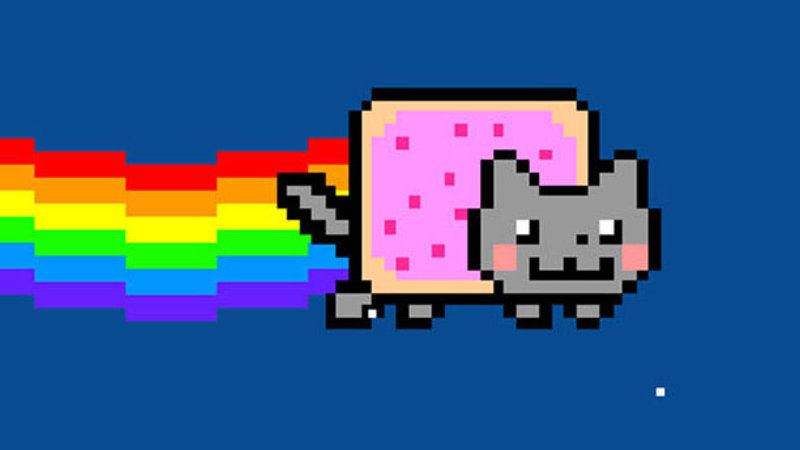Over the course of the last decade, memes grew and evolved into what they are today. Many changes happened: many memes rose to the height of popularity then plummeted into the realm of cringe. The 2010s had many memes which defined each year, such as in 2010 itself when the most popular memes were what are known as rage comics. Rage comics were short and simple comics, usually with white backgrounds, stick figures, and faces such as the Trollface. After that, in 2011, while memes had not changed much, some new ones grew in popularity. One such meme was the Nyan Cat, which was a video of a pixel cat with a Pop-Tart body with a rainbow trailing behind it while flying through space, accompanied by an obnoxiously catchy song.
In 2012 there were many new popular memes, such as the condescending Willy Wonka meme, or the Overly Attached Girlfriend meme, which were pictures with captions of the same joke over and over just in slightly different forms–this format lasted for a while. Another popular meme in 2012 was the song “Friday” by Rebecca Black, which was popular solely due to the fact that people hated it. In 2013, a meme which has made a lasting and memorable impact was born: doge. Doge referred to a picture of a Shiba Inu, which featured words like “wow,” “such,” “many,” and “so” used in intentionally grammatically-incorrect forms. 2013 was also home to another meme: Ylvis’s most popular song, “What Does the Fox Say?” This meme grew to great popularity and then subsequently perished without a trace.
In 2014, memes took on a new form, and Vine (created in January 24, 2013) became massively popular and caused many people to start their careers in entertainment. Vine then shut down in 2017, leading all of the creators on Vine to move to YouTube, to the chagrin of many. In 2015, corporations started to try to latch onto memes, which resulted in many advertisements which created nothing but cringe as the corporate CEOs knew nothing about what young people actually enjoyed. 2015 was also home to the MLG meme, illuminati meme, John Cena meme, and many more. 2016 featured many new memes like the Arthur’s Fist meme, which was a picture of the titular character of the show Arthur clenching his fist. Another massively popular meme in 2016 was about a deceased gorilla named Harambe–this meme would change the course of memes forever.
In 2017, fidget spinners became a popular meme. Fidget spinners are devices designed to help people with anxiety to focus, and they are usually three small weights spinning around a central piece with ball bearings in between them. 2018 housed memes very similar in structure to the ones still popular today. One such meme was the Ugandan Knuckles meme, which was born in VRChat when someone using an avatar of a deformed version of the character Knuckles from the Sonic the Hedgehog games used a false Ugandan accent to say “do you know the way?” Another meme of 2018 was the Big Chungus meme. The Big Chungus meme featured a frame from a 1941 Merrie Melodies cartoon in which the character Bugs Bunny was mocking the character Elmer Fudd by transforming into a chubbier version of himself. 2018 also housed memes based around the highly anticipated Super Smash Bros Ultimate game released for the Nintendo Switch console on December 7, 2018.
After 2018 came 2019. 2019 housed a variety of memes which all shared great popularity. 2019 memes quickly rose in popularity and then plummeted at the same rate. Some of the more memorable memes of 2019 included memes about the character Thanos, who was prominently featured in Avengers: Infinity War and Avengers: Endgame, the CEO of Tesla, Elon Musk. The doge meme also resurfaced. Most of the memes that became popular near the end of 2019 were based around the Disney+ show The Mandalorian and the Tesla Cybertruck. The 2010s created a lasting legacy of memes, and the meme awarded “meme of the decade” was the doge meme. The 2010s could arguably be defined by memes, as they have essentially become a universal language of the internet, bringing fame and laughter to so many and shaping a substantial part of today’s culture.

